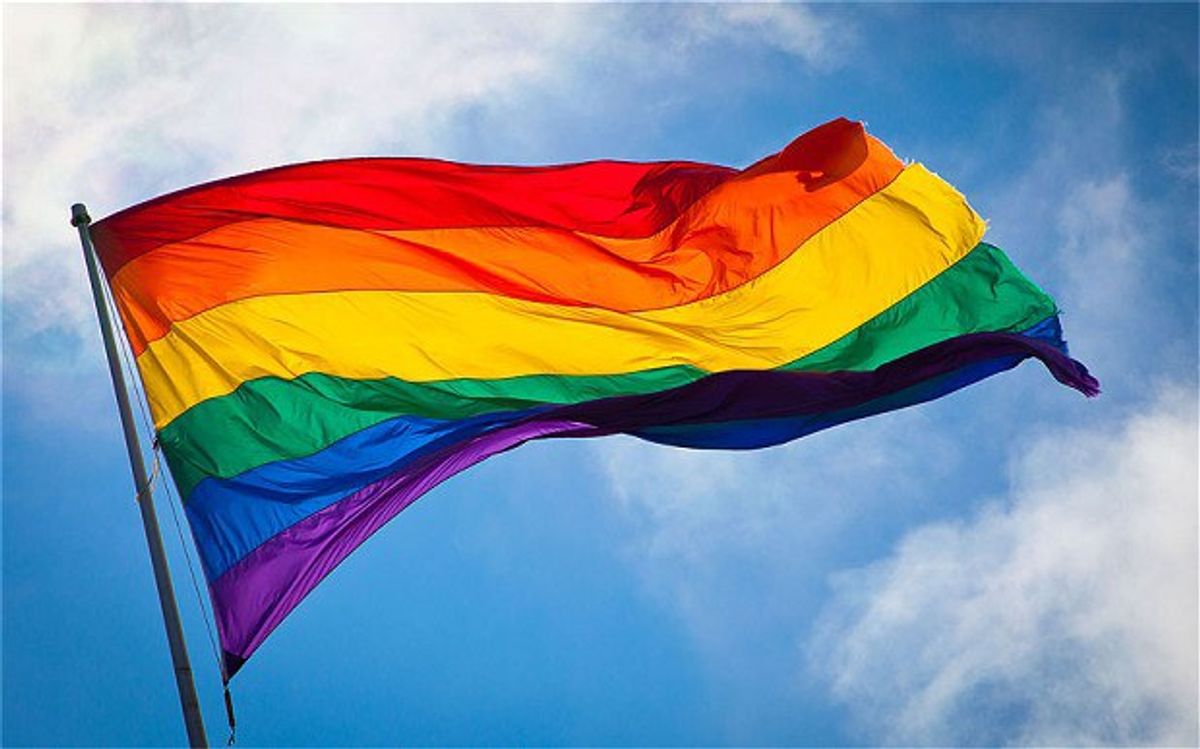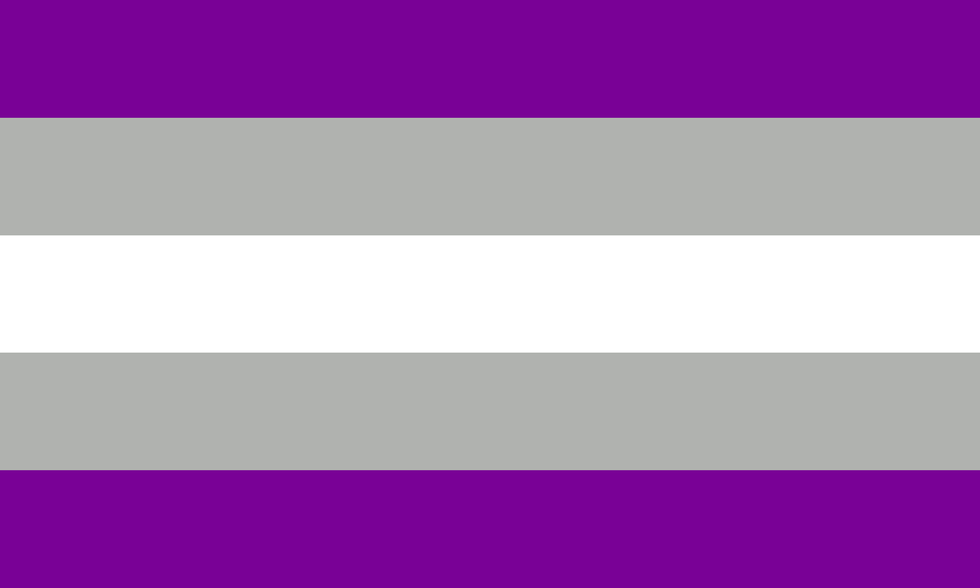We all know how confusing it can be to navigate the world of sexual and romantic attraction, especially since there are so many identities that one can be, it can be hard to realise which one you are. This is a helpful, extremely basic rundown of 8 of the most well-known sexual and romantic identities.
1. Heterosexual & Heteromantic
Everyone knows what this is-- it’s assumed that every single person on this big planet called Earth is heterosexual and heteromantic, which is better known as “straight."
Of course, not everyone is straight, and not everyone will be straight when they grow up, even if they are for a lot of their life.
Heterosexuality means that you are sexually attracted to people of the opposite gender, and heteromantic means that you are romantically attracted to people of the opposite gender.
2. Homosexual & Homoromantic
Again, plenty of people know what identity this is, and if you are someone who does not, that’s okay, because you’re here to learn. Homosexual, which is better known as gay, simply means that that person loves someone of the same gender as themself.
To be more specific about it, if a person is homosexual they are sexually attracted to people of the same gender as themself, and if someone is homoromantic, they are romantically attracted to people of the same gender as themself.
3. Bisexual & Biromantic
The definition of bisexual-- or simply bi-- has been tossed around for a while as people attempt to determine what it “really” means. One of these definitions includes that idea that someone who is bisexual can only love men and women, since the prefix “bi” means “two."
However, a newer definition has sprung up that states that bisexual people can love people of the same gender as them, and of different genders as well. Whether this means a bisexual person loves men and women, or men and women and nonbinary people, or a specific subset of nonbinary people is all fine.
There is, again, the difference between sexual attraction and romantic attraction-- it is both normal and important to have this distinction in mind, particularly as we go into other sexualities.
4. Pansexual & Panromantic
Many people often confused pansexual/romantic with bisexual/biromantic, and that is actually a common mistake to make. As someone who identifies as pansexual, a question that I receive a lot is, “But doesn’t that just make you bi?”
The short answer is no, it does not. If I, or anyone else, say we are pansexual, then that’s what we are.
The why of it can be a bit more complicated. The prefix “pan” means “all," so to put it in incredibly simplistic terms, pansexual/romantic is the sexual/romantic attraction to all genders. This definition, as with any personal identifier, can fluctuate from person to person. Pansexual people can have types they are more attracted to-- being attracted to all genders does not mean we are attracted to everyone.
Of course, some people believe that this makes pansexuality the “most accepting” of all the identities, and while it would be nice if that were the case, it isn’t. Saying something like that can be harmful to asexual people.
5. Asexual & Aromantic
Speaking of asexual people, here we enter the lovely asexual/aromantic spectrum. Now, before you go all biology on me, asexual people do not reproduce with themselves, nor are they plants. They are people, and deserve to be treated as such.
Simply put, being asexual means that that person is not interested in having sexual relations with anyone. For any reason. This can vary, of course-- it’s a spectrum and can be visualised like a sliding scale-- but we’ll get into that with the next two.
The same occurs for people who are aromantic: this simply means that a person who is aromantic does not want to have romantic relationships with anyone. Again, the distinction between sexual attraction and romantic attraction is heavily important here, as the two are not exclusive and certainly not mutual.
6. Demisexual & Demiromantic
Back to the sliding scale of sexual and romantic attraction, demisexual/demiromantic belongs on the asexual spectrum. For someone to identify as either form of demi, a deeper emotional bond is required before there can be any sexual attraction (if you’re demisexual) or romantic attraction (if you’re demiromantic).
You might be wondering, doesn’t this make everyone demisexual?
The answer is no. This also (usually!) does not have to do with a preference for one-night stands over long-term relationships. A fair amount of demisexual people might be uncomfortable with the idea of a one-night stand, as that deeper emotional connection might not be there.
A similar situation can be applied to demiromantic individuals, where a deeper connection - such as a strong and long-lasting friendship - is necessary for them to have with someone before thoughts of dating the other person cross their mind.
Demisexuals and demiromantics are not prudes and they are not “picky." This is a part of their identity and it deserves respect.
7. Grey-Asexual & Grey-Aromantic
Continuing along the spectrum that is asexuality, we have another identity on the spectrum: grey-asexual and grey-aromantic. Now, I’m sure you’re wondering: what on earth do colours have to do with sexuality and romantic orientations? Well, I’ll tell you.
When someone is grey-asexual or grey-aromantic, that means that they usually do not experience sexual and/or romantic attraction, but sometimes they can. How does the colour grey factor into this? Well, we all know that things in life are not always black or white-- sometimes there are shades of grey. Experiencing sexual and/or romantic attraction sometimes puts this identity along the asexual spectrum into a shade of grey.
Again, as with any identity, this can vary from person to person. It is very important to ask someone of an identity like this what exactly that means to them, and listen when they tell you.
8. Polysexual & Polyromantic
Last on this list but not least is polysexual and polyromantic. With that prefix, you may be wondering if this is similar at all to the identity of polyamorous individuals. The answer to that wonder is no, there is not a correlation between polysexuality and polyamory, though I know the prefixes can be confusing.
Polysexuality is another one of those slightly confusing identities, and again, it is incredibly important to ask the individual who identifies as such.
Simply put, polysexuality is the attraction to multiple genders. This can be used synonymously with pansexual, as we mentioned before, but more often than not, polysexual and/or polyromantic people do not experience attraction every gender, but to specific genders.
For example, someone who is polysexual and/or polyromantic could be sexually and/or romantically attracted to men and then transgender people, or they could be sexually and/or romantically attracted to women and nonbinary people, or they could be sexually and/or romantically attracted to men and women and genderqueer people-- the possibilities are endless.
What do you think of these identities and their definitions? Have you heard of any of these before? Do you identify as one of these, or as something else entirely? Do the definitions match up with what you think you knew, or what you already know?
Make sure to let me know all of these answers down in the comments, and share this with some of your less-educated friends so that everyone can learn more about different sexual identities.


































